Electropermanent Magnets: Programmable Magnets with Zero Static Power Consumption Enable Smallest Modular Robots Yet
http://www.hizook.com/blog/2010/12/07/electropermanent-magnets-programmable-magnets-zero-static-power-consumption-enable-s

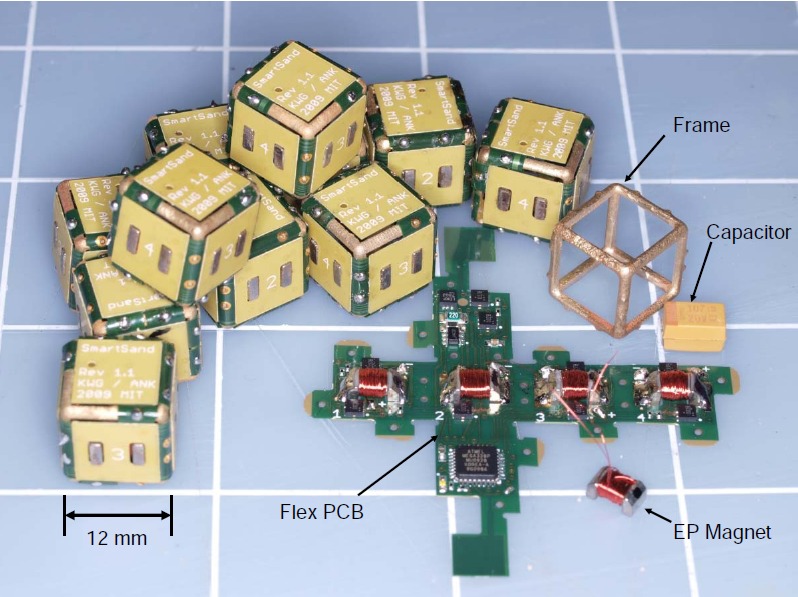
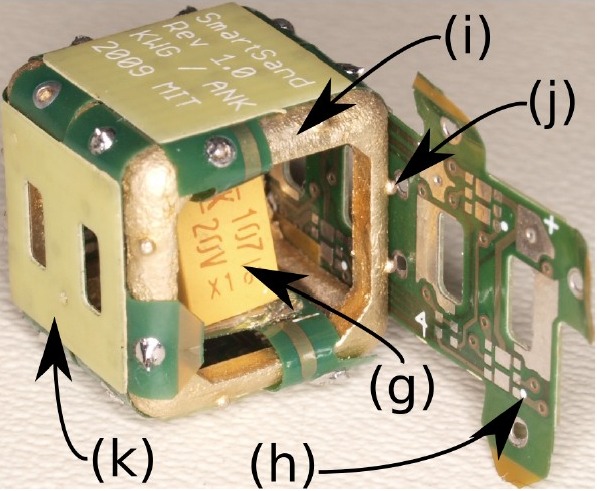
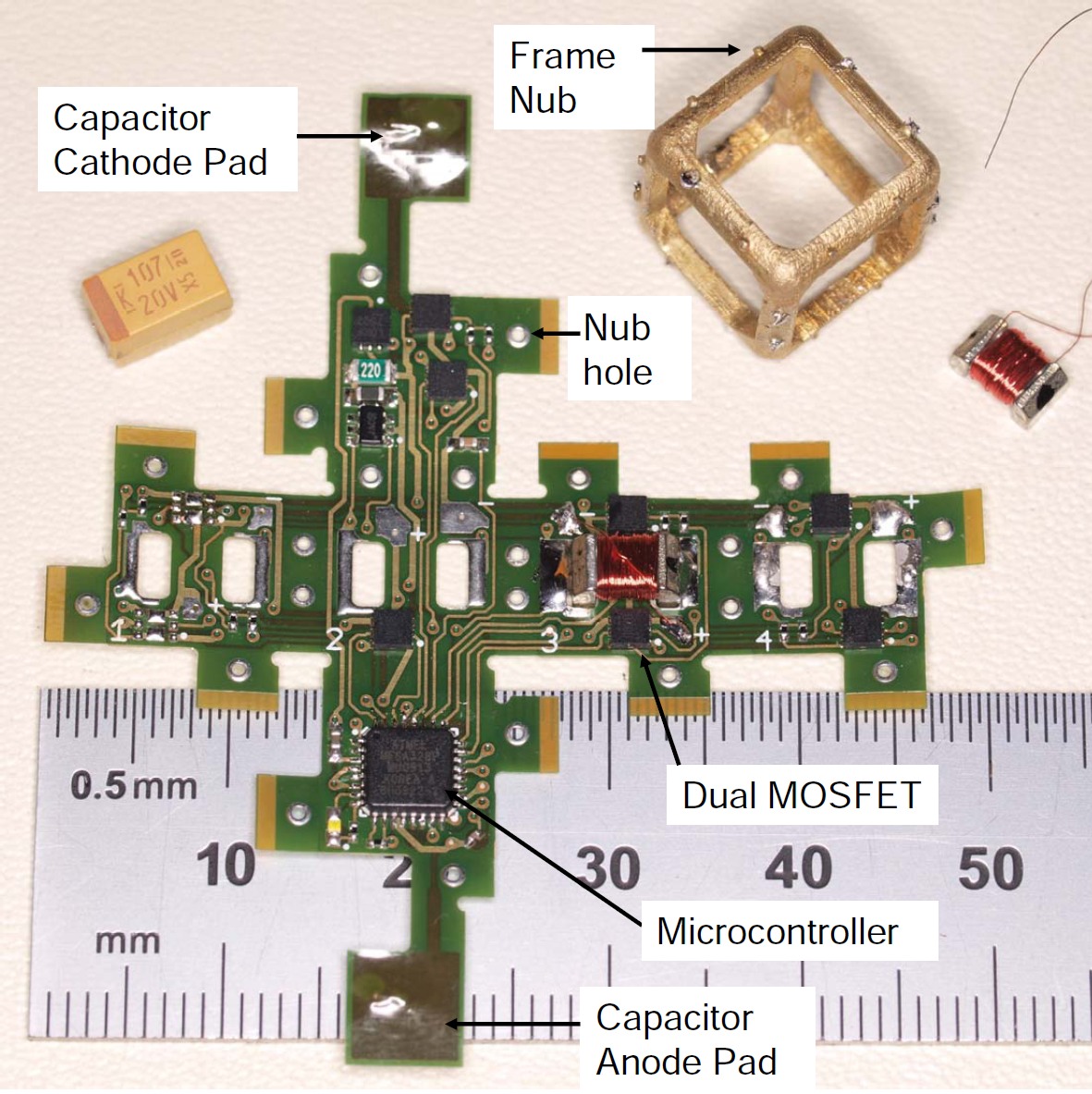
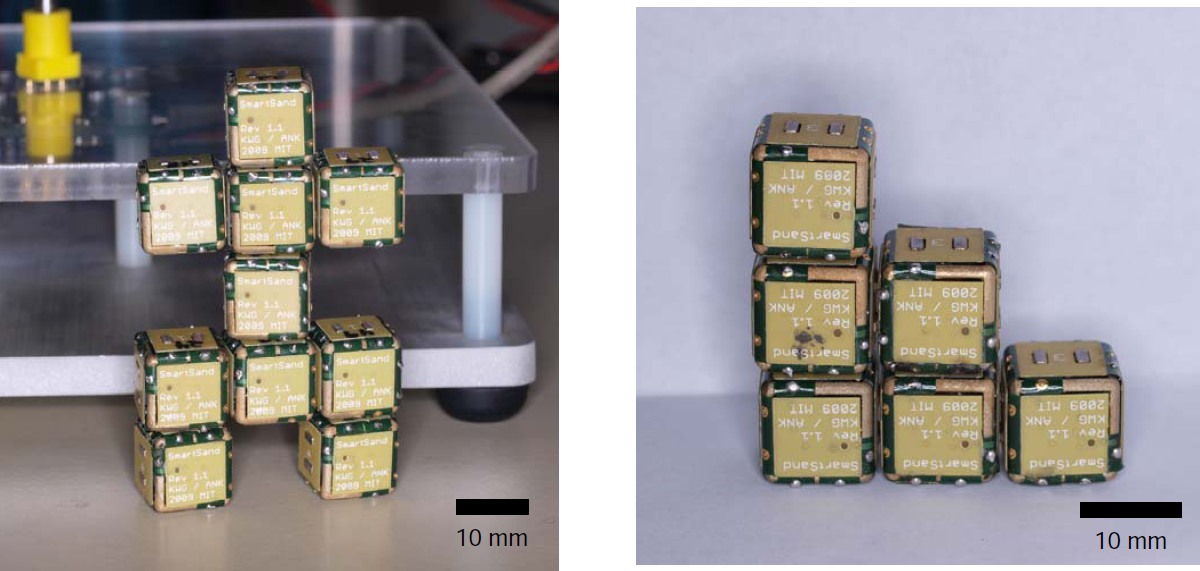
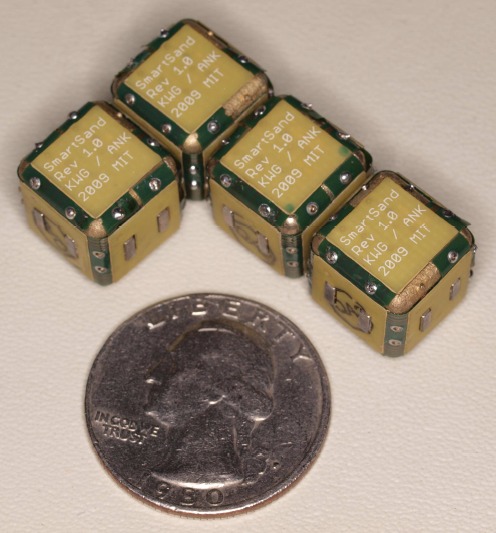
I first learned about EP magnets from Ara Knaian's PhD Thesis, titled "Electropermanent Magnetic Connectors and Actuators: Devices and Their Application in Programmable Matter," which also included the Robot Pebbles from the above. Ara's thesis was advised by Dr. Daniela Rus (Robotics) and Dr. Neil Gershenfeld (Physics) from the MIT Media Lab -- so it has a nice balance in perspective between the two disciplines. To summarize the operating principle:
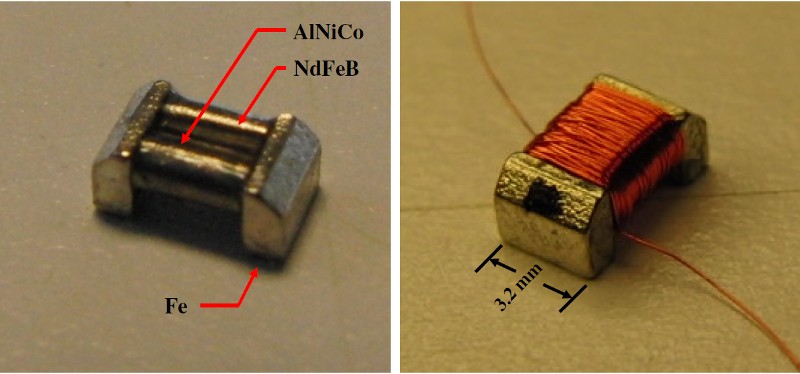

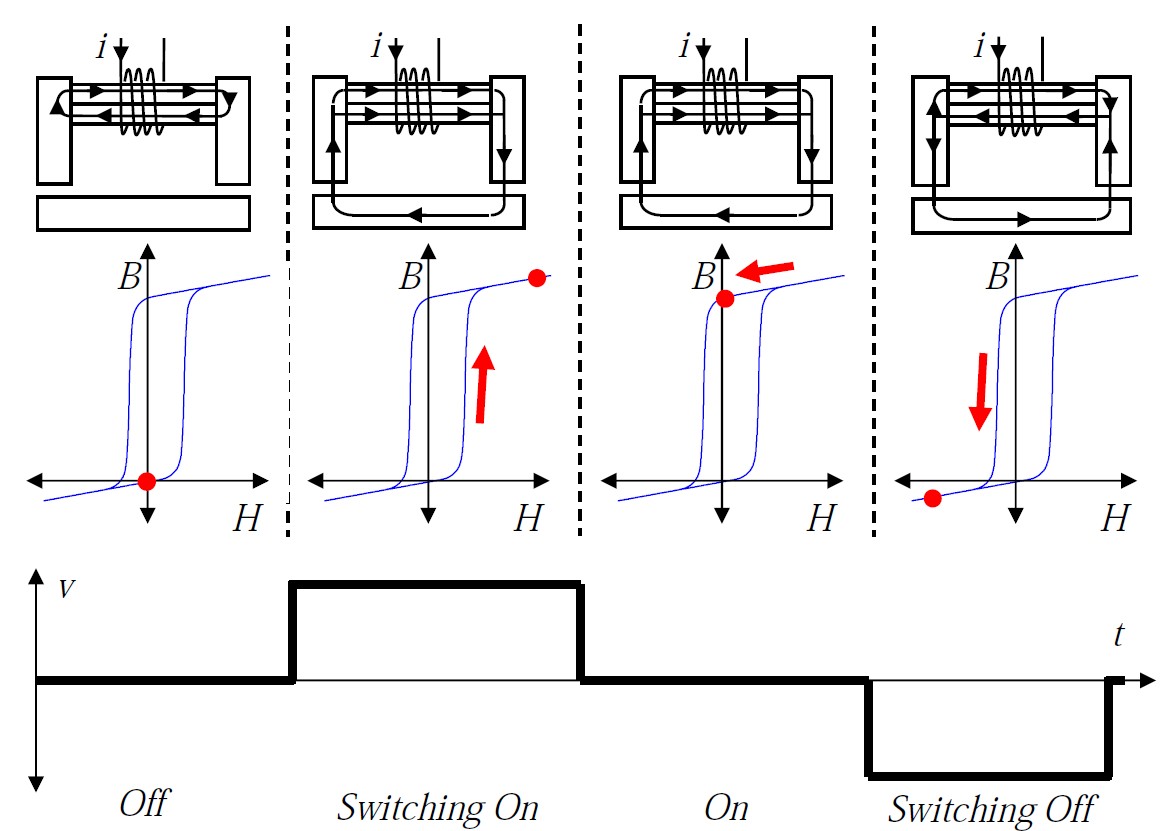
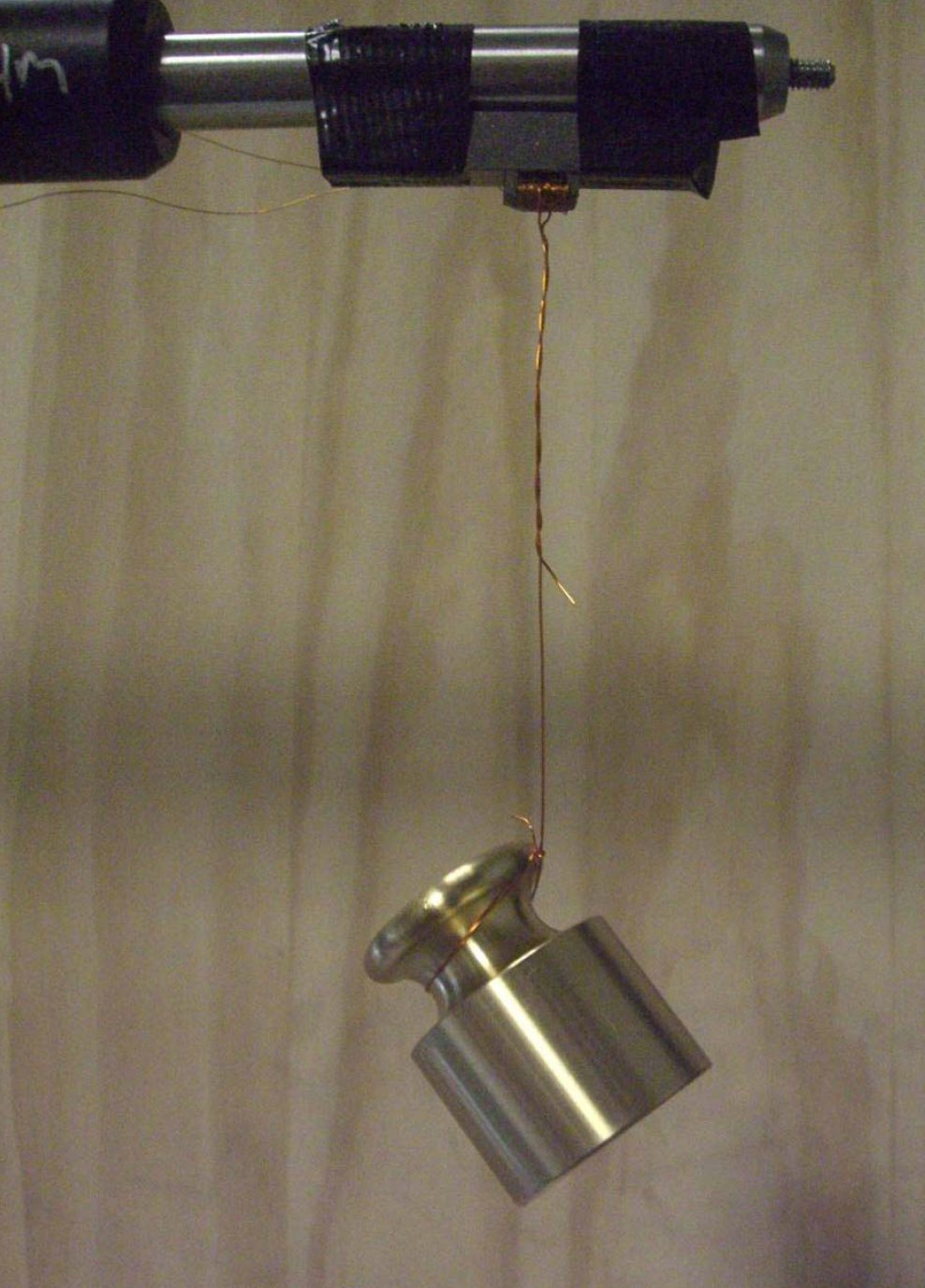
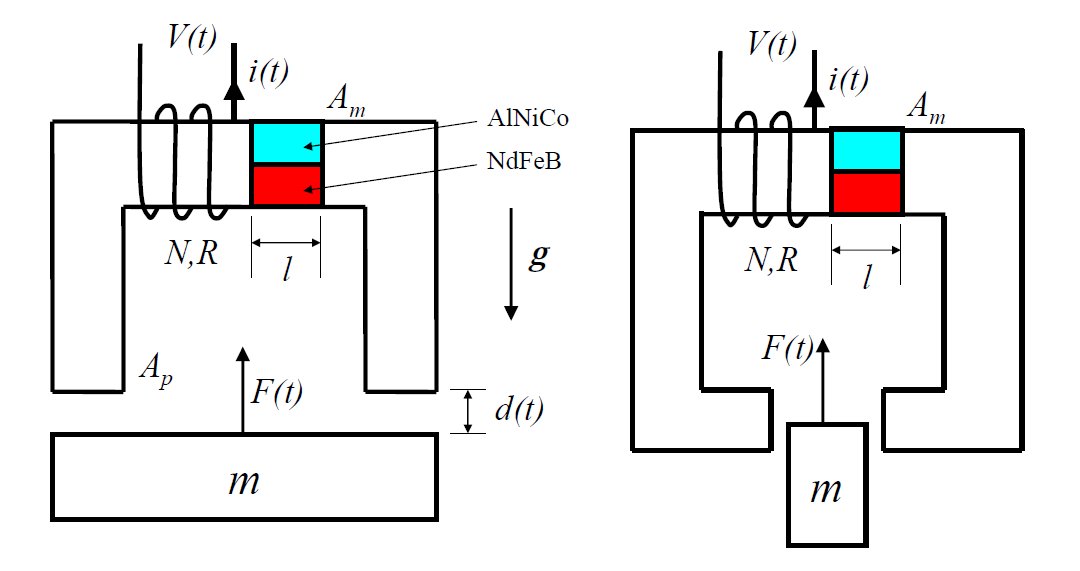
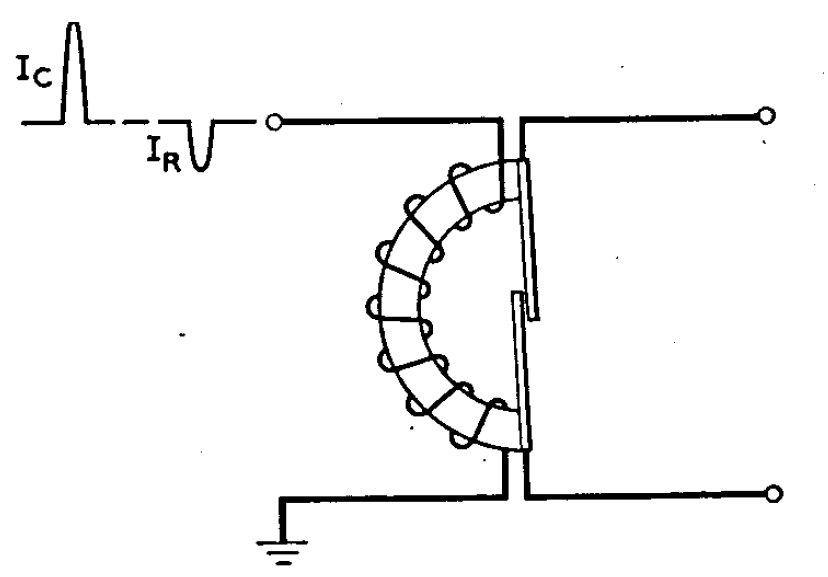
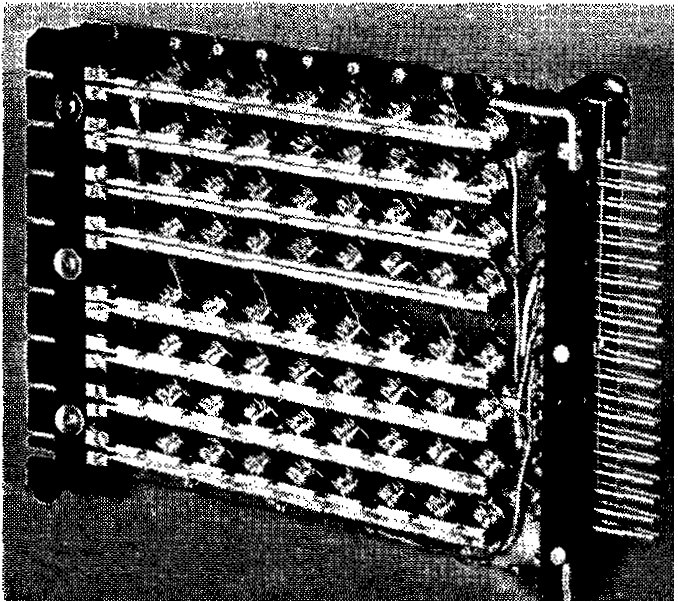
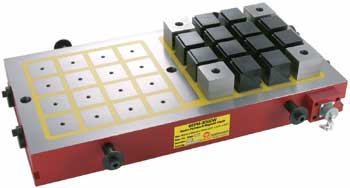
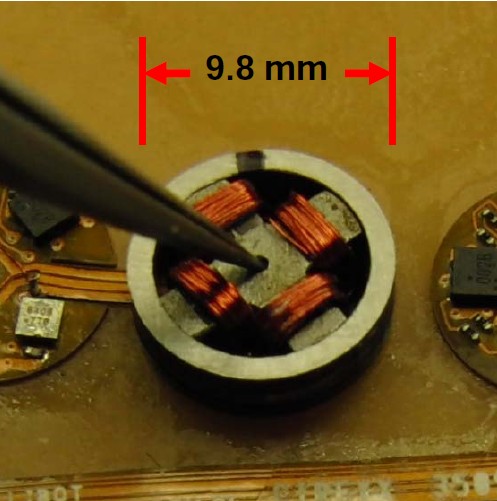
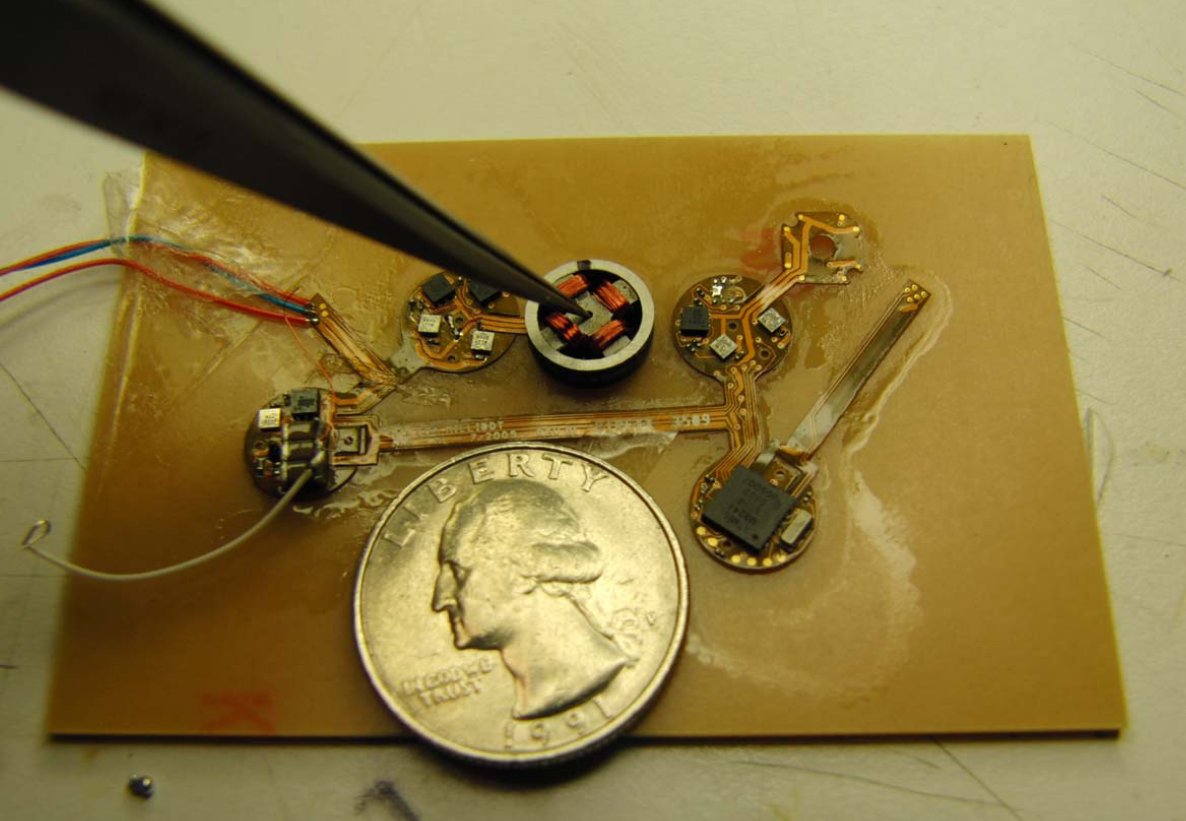
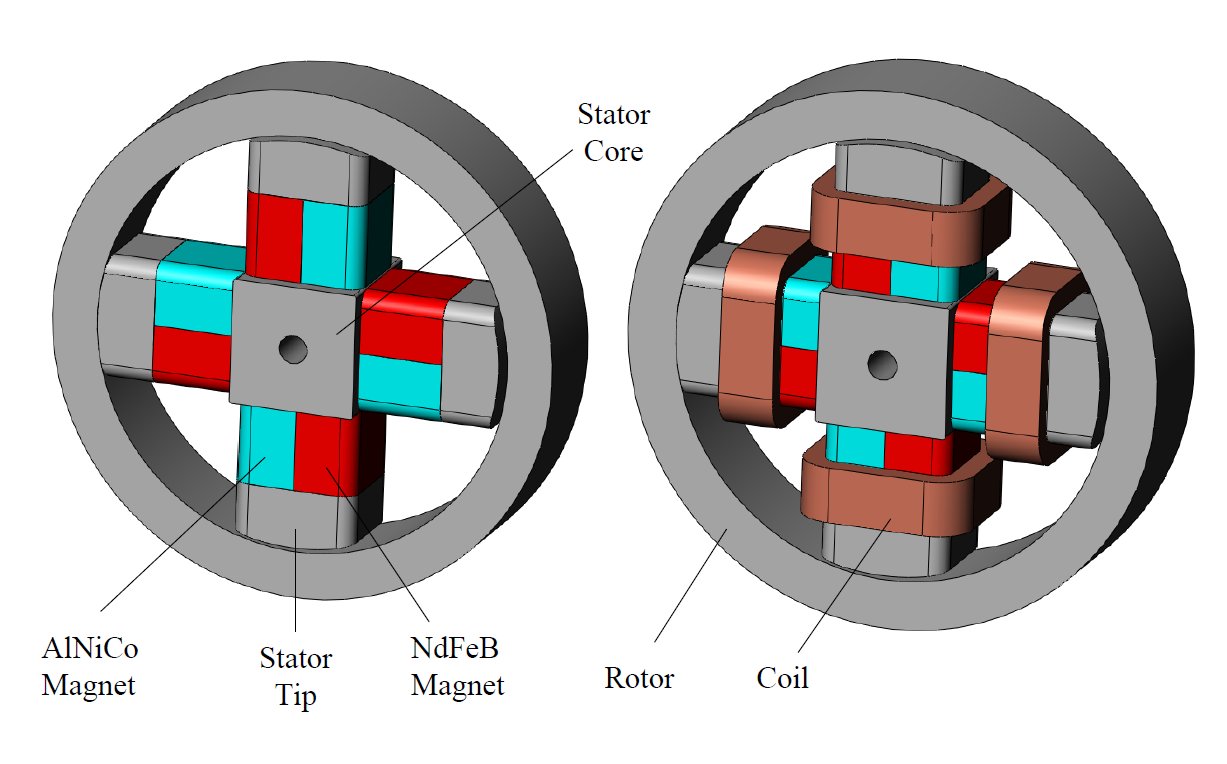
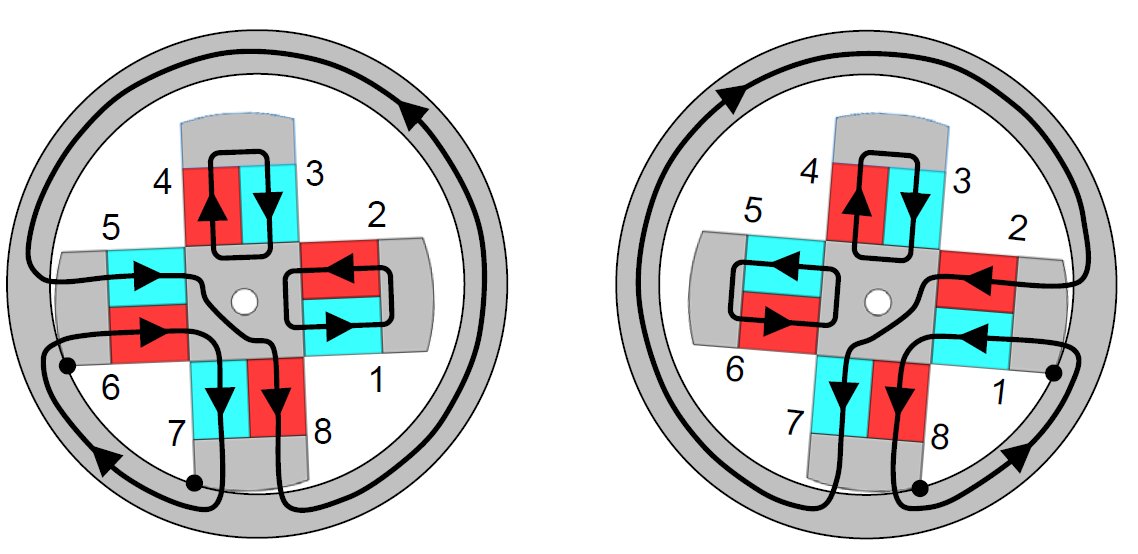
Electropermanent Magnets: Programmable Magnets with Zero Static Power Consumption Enable Smallest Modular Robots Yet
December 7, 2010 by Travis Deyle

Take a moment and envision an electromagnet: a simple coiled wire driven by a hefty electrical current gives a fully-programmable magnetic field strength (on, off, and everything between). Electromagnets are ubiquitous, but it turns out that there is a little-known device with similar functionality yet zero static power consumption -- they are called electropermanent magnets, and they've been around and in use since the 1960's! A 2010 PhD thesis by MIT Media Lab's Ara Knaian examines the physics, scaling, trade-offs, and several new actuator designs (eg. stepper motors) using these little-known wonders. Recently, electropermanent magnets facilitated an innovation in "programmable matter," where they were instrumental in creating the world's smallest self-contained modular robots to date (12mm/side). Read on for details about this fascinating technology, along with discussions about existing and possible robotic applications.
Electropermanent (EP) Magnets for Programmable Matter:
Electropermanent magnets are an innovation in "programmable matter." Specifically, they are instrumental for actuation in the world's smallest self-contained (energy storage, actuation, communication, computation) modular robots to date -- measuring just 12mm per side. These robots were presented in an ICRA 2010 paper titled, "Robot Pebbles: One Centimeter Modules for Programmable Matter through Self-Disassembly" by Kyle Gilpin, Ara Knaian, and Daniela Rus. Externally, EP magnets look very similar to electromagnets (a coil of wire), but they differ in some fundamental ways (rather technical and non-robotic -- more materials science) that will be examined in later. But first, let's take a look at the Robot Pebbles.





Electropermanent magnets are instrumental for modular robots of this size, allowing Robot Pebbles to (programmatically) self-adhere in a scalable fashion (as devices are miniaturized) with relatively low power consumption. This is in contrast to competing techniques that either use electromagnets (power-hungry) or permanent magnets with a mechanically actuated disconnect latch (bulky and poor scaling).
While plenty of people are working on nano-robots (usually computation-less devices operating in externally-controlled electric/magnetic fields), it is encouraging that progress is still being made in modular robot miniaturization. Robot Pebbles have onboard computation (microcontroller), energy storage (via surface mount capacitor), actuation (via EP magnets), and communication / power transfer (via iron electrical contacts on the EP magnets) for fully self-contained operation -- this a small but definite step towards true programmable matter.
Realistically, true programmable matter is still relegated to the distant future; however, I'd really like to have a few of these as a desktop toy. Unfortunately, I doubt that 1cm EP-magnet modular robots will become commercially available any time soon. However, Cubelets offer a nice near-term commercial option if you're willing to settle for a bit more bulk -- they're supposed to start shipping in January 2011.
Electropermanent Magnet Operating Principles:
I first learned about EP magnets from Ara Knaian's PhD Thesis, titled "Electropermanent Magnetic Connectors and Actuators: Devices and Their Application in Programmable Matter," which also included the Robot Pebbles from the above. Ara's thesis was advised by Dr. Daniela Rus (Robotics) and Dr. Neil Gershenfeld (Physics) from the MIT Media Lab -- so it has a nice balance in perspective between the two disciplines. To summarize the operating principle:
An electropermanent magnet is a solid-state device which allows an external magnetic field to be modulated by an electrical pulse. No electrical power is required to maintain the field, only to do mechanical work or to change the device's state. The electropermanent magnets described in this thesis contain two magnetic materials, one magnetically hard (e.g. Nd-Fe-B) and one semi-hard (e.g. Alnico), capped at both ends with a magnetically soft material (e.g. Iron) and wrapped with a coil. A current pulse of one polarity magnetizes the materials together, increasing the external flow of magnetic flux. A current pulse of the opposite polarity reverses the magnetization of the semi-hard material, while leaving the hard material unchanged. This diverts some or all of the flux to circulate inside the device, reducing the external magnetic flux.


For those with a bit of physics background, these B-H curves tell the story:

For electrical engineers (like myself), an electrical circuit analogy is useful as I rarely work with magnetic circuits. Imagine that you have two parallel resistors (magnets) of approximately equal value. One resistor's value is easily increased or reduced (the low-coercivity "semi-hard" magnet) by applying a temporary directional magnetic field (eg. by a coil of wire), and this resistor will retain its new value after the field is removed (magnetic remanence). The other resistor's value cannot be changed (the high-coercivity "hard" magnet). By programmatically supplying current to the coil of wire (pulse strength and duration), we can achieve any desired resistance (within reason) and it will remain constant even after the current is disconnected from the coil of wire. This is what is happening in the electropermanent magnet, only the resulting effect is a programmable magnetic field strength with zero static power consumption -- cool! The resulting magnetic field can be used to apply static forces and/or do additional work -- such as clamping (left), gap-closing (middle), or side-drive operation (right).


It is important to note that physical work is being done to to alter magnetic domains in the semi-hard magnet (magnetic remanence). A detailed analysis of the thermodynamic cycle of these devices is presented in Ara Knaian's thesis, but in effect, there is no free lunch: electropermanent magnets are only superior to electromagnets if the time between switching is not too short. To quote:
Electropermanent magnets use higher instantaneous power but lower overall energy than electromagnets, with break-even times in the milliseconds at centimeter scale and in the microseconds at millimeter scale according to our analysis. Electropermanent magnets are less sensitive than electromagnets to lower winding fill fractions and lower conductivity wire, making them more amenable to microfabricated coils.
EP magnets aren't exactly new. They were developed in the 1960's to build "ferreed switches" (left) used intelephone switching equipment (middle). Today, they are still used for work-holding chucks (right) and some large "electromagnet" cranes. You can find a wealth of information about these designs in Ara's thesis as well.



The main contribution of Ara's thesis was the physics, scaling, trade-offs, and several new actuator designs using EP magnets. We've already seen his work on Robot Pebbles, but he also worked on electropermanent stepper motors!
Electropermanent Magnet Stepper Motors:
One very interesting outcome of Ara's thesis was the development of (patent pending) EP magnet stepper motors. This tiny "wobble" stepper motor uses EP magnets in place of traditional stator windings (electromagnets).



By switching the state of nearby EP magnets, the motor will step through various (rotational) configurations.

Owing to the unique properties of EP magnets, this type of stepper motor offers some interesting benefits.
- At low RPM (very little on-off switching), EP magnet motors have higher efficiency compared to electromagnetic motors.
- At zero RPM ("stall"), EP magnet motors still outputs constant force / torque. In electromagnetic motors, stall conditions result in massive power consumption -- this is a major problem for motor startup.
Personally, I think EP magnet stepper motors could be very well-suited to hub motors (like those done byCharles Guan), as they are notoriously low-RPM. What sort of applications can you imagine?
Conclusion:
Straight from Ara Knaian's thesis:
Electropermanent magnets can have their holding force switched on and off by the application of a momentary electrical pulse. Electropermanent magnets have low power consumption and temperature rise compared to electromagnets, especially at small length scale. Electropermanent magnets require energy proportional to their volume and hold with force proportional to their area, so fundamental scaling favors their low-energy operation at small dimensions.
At centimeter scale, electropermanent magnets can hold hundreds of times their own weight, can exert force comparable to their weight from a distance comparable to their length, and switch is a fraction of a millisecond. At millimeter scale, scaling laws predict each of these metrics should improve.
Electropermanent magnets use higher instantaneous power but lower overall energy than electromagnets, with break-even times in the milliseconds at centimeter scale and in the microseconds at millimeter scale according to our analysis. Electropermanent magnets are less sensitive than electromagnets to lower winding fill fractions and lower conductivity wire, making them more amenable to microfabricated coils.
Electropermanent magnets are stronger than breakdown-limited electrostatic plates in air, operate at much lower, more practically switched voltages, and allow larger air gaps for higher resistance to dust and contamination. On the other hand, they have a higher profile and use more energy to switch.
All of the above conclusions make electropermanent magnets a promising building block for actuators in the next generation of batch-fabricated, millimeter-scale robotic systems.
Incidentally, Ara's thesis is one of the most comprehensive and impressive I have ever read (I've read it twice). Aspiring to make my own as impressive, I am shifting most of my focus onto my thesis for the coming months. It is likely that my Hizook output will taper off in the meantime. I will try to get guest posters to fill in occasionally (want to help?!), but I'll be back...
■
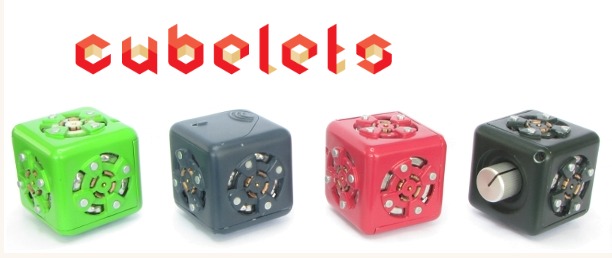

댓글
댓글 쓰기